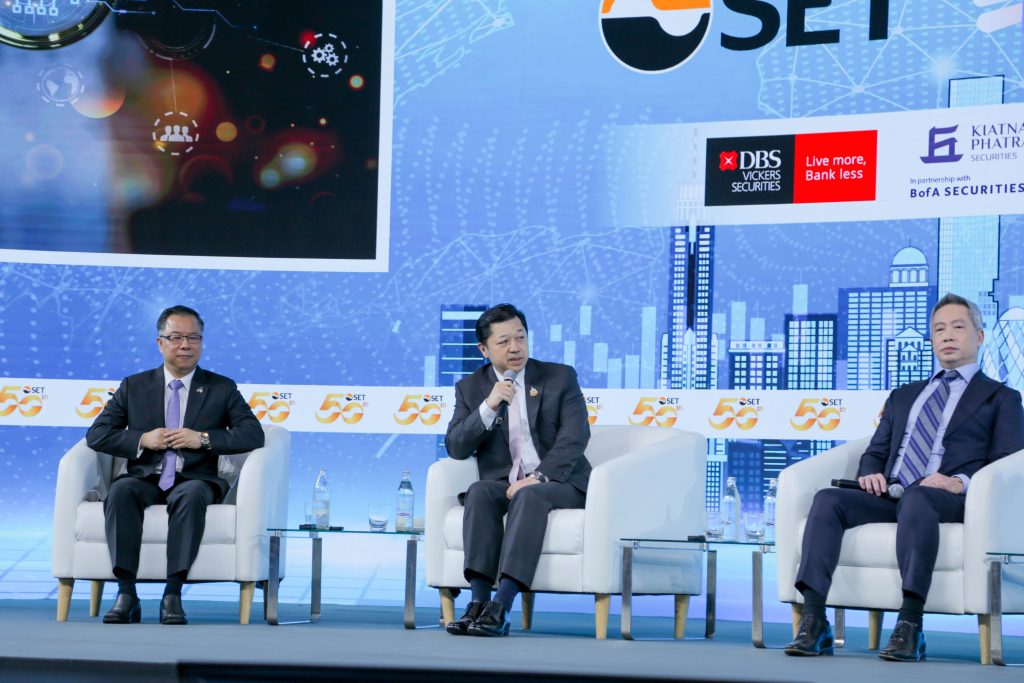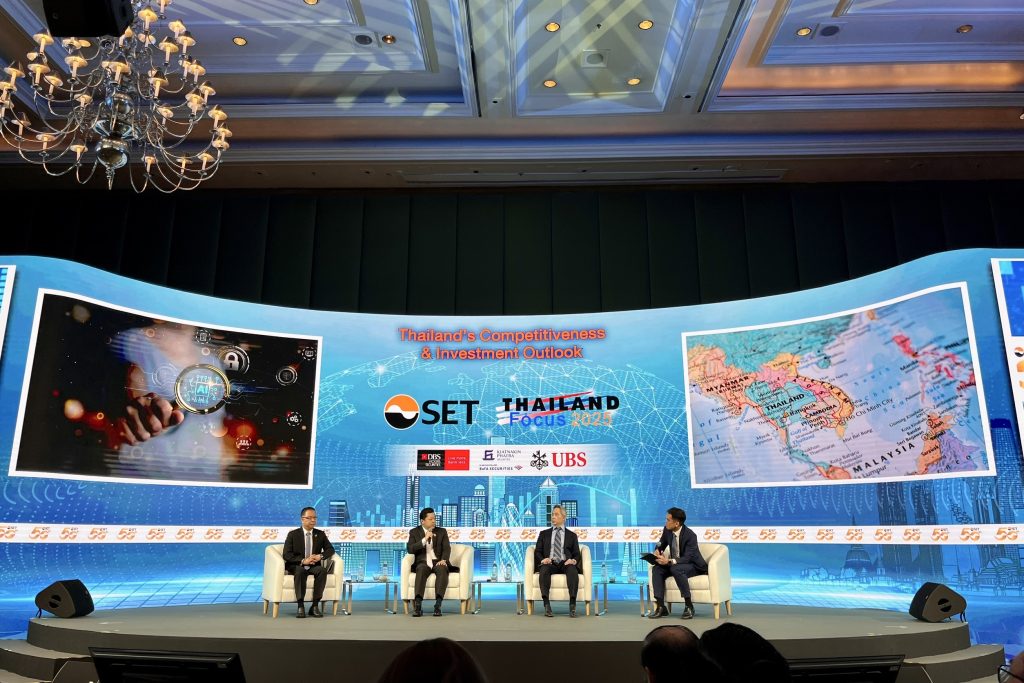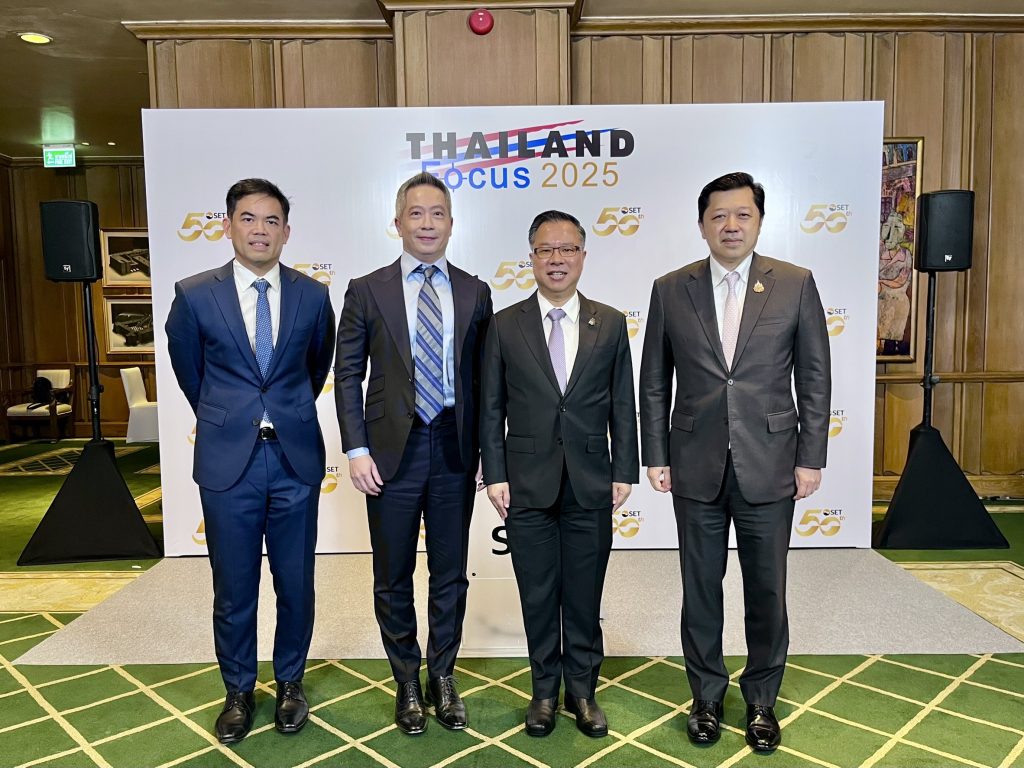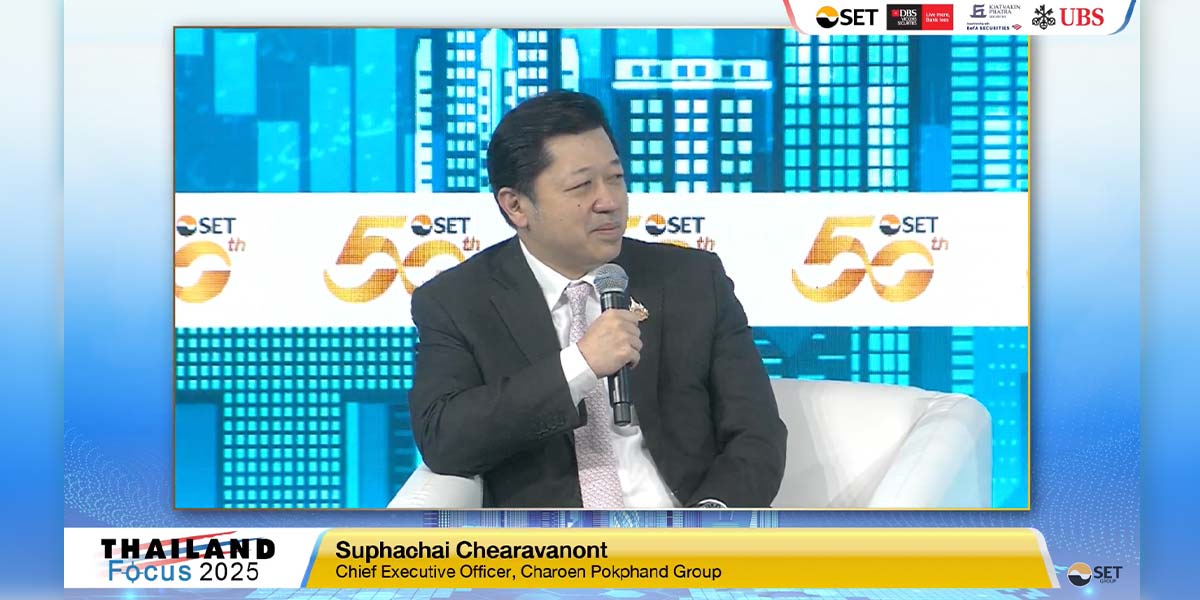At the Thailand Focus 2025 “Beyond the Challenges” event, Mr. Suphachai Chearavanont, Chief Executive Officer of Charoen Pokphand Group, shared a private sector perspective on Thailand’s competitiveness and investment outlook. His remarks underscored the country’s core strengths, investment trends, and the strategic shifts required to navigate an increasingly complex global landscape.
Continued Investment and Core Strengths
Mr. Suphachai affirmed that his group, CP Group, continues to invest across all its core business units, driven by growth opportunities rather than policy alone. The CEO noted that group companies such as CP Axtra, CPALL, True Corporation and CPF continue to invest both domestically and overseas.
At the discussion panel, he aligned with the view of the Board of Investment (BOI) Secretary General, Mr. Narit Therdsteerasukdi, on Thailand’s strong fundamentals. In particular, he pointed to the surge in data center investment, driven by Thailand’s strategic geographic location, attractive incentives, and openness to investment. He noted that this positions Thailand to become a regional hub for data centers, laying the foundation for an AI-driven economy.
Thailand has also emerged as a top ASEAN destination, especially for Chinese industrial estate manufacturing investment that sees Thailand as the number one option. Mr. Suphachai attributed this to Thailand’s incentives, livability, and welcoming culture. He also highlighted the country’s evolving telecom infrastructure, with Bangkok and the Eastern Economic Corridor (EEC) developing into hubs for new industries and data centers. The EEC, he noted, is transitioning from a petrochemical base into a center for innovation and advanced industries.

Attracting Talent and Enhancing Livability
On the issue of talent, Mr. Suphachai emphasized Thailand’s attractiveness as a place to live, work, and invest. He pointed to long-term visa schemes, ease of doing business, and strong incentives as major draws. He also suggested that bold policies—such as allowing 99-year land ownership for foreigners—could further boost Thailand’s ability to attract investment and skilled professionals, which are the parts that the government and relevant agencies are actively working to develop policies that facilitate long-term investment.
“Thailand is a really livable place,” he said, stressing that quality of life is a key competitive advantage. Despite geopolitical uncertainties, he expressed confidence in Thailand’s trajectory.

Navigating Tariffs and Supply Chain Diversification
Discussing tariffs, Mr. Suphachai noted the limited impact on his feed and poultry business, as raw materials like corn and wheat are mostly sourced from South America and Eastern Europe. In fact, a shift toward U.S. imports could even reduce costs.
However, he acknowledged the potential strain on local soybean and corn growers, and suggested that farmers should be encouraged to shift towards planting higher-value plantations to increase their income, rather than only producing low-cost raw materials. As tariffs are imposed relatively at the same level in the region, it depends on how Thailand can capture the advantage and offer attractive returns to investors, which in this case are; energy, clean energy, infrastructure, cost efficiency. These will open the path for industrial development to the future.
He highlighted two key areas with high potential for growth:
Rice: Global demand for Thai rice, particularly jasmine rice, remains high, but Thailand is not fully meeting this demand. The country needs to adopt better technology and management practices to boost production and value.
Fruits: The Chinese market has a massive demand for Thai fruits, but this opportunity requires better management of production and export logistics to be fully capitalized on.
He called for greater technology adoption, better management, and industrialisation in agriculture. For him, tariffs present an opportunity to strengthen local supply chains and encourage Thai businesses to transition from traditional manufacturing toward integration in new, high-value supply chains.
Strategies to Enhance Competitiveness
Looking ahead, Mr. Suphachai outlined key priorities for Thailand to strengthen its competitiveness:
Talent Hub: Position Thailand as a hub for global talent while reskilling its workforce. This requires political stability and strong leadership.
Geopolitical Value and Connectivity: Capitalize on Thailand’s location at the heart of ASEAN by strengthening logistics, transport infrastructure, and regulatory frameworks to connect with China and regional neighbors. Mr. Suphachai pointed out that Thailand needs to remain “Neutral,” while raising its value at the same time.
Agricultural Transformation: With over 40% of the population reliant on agriculture, he stressed the need for structural transformation through cooperative models over the next 3–5 years.
Digital and Green Economy Leadership: Thailand must accelerate its push toward digitalization and sustainability to meet the expectations of global investors and become a leader in the green economy.
On the closing note, Mr. Suphachai’s address portrayed Thailand as a country with solid foundations and strong investment appeal. Yet, he stressed, the nation must strategically adapt, innovate, and commit to transformative policies to secure a sustainable competitive edge in an evolving global environment. He noted that Thailand is moving in the right momentum and the kingdom can take the lead in the green economy.






